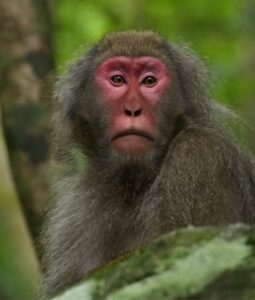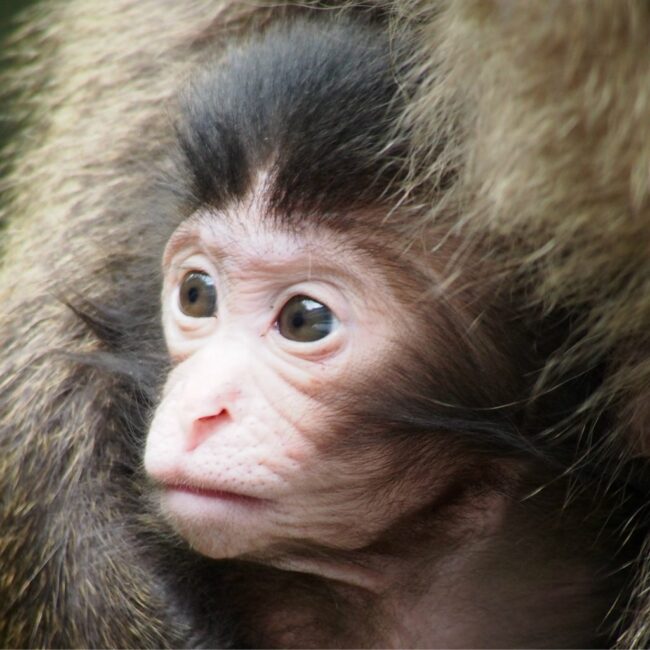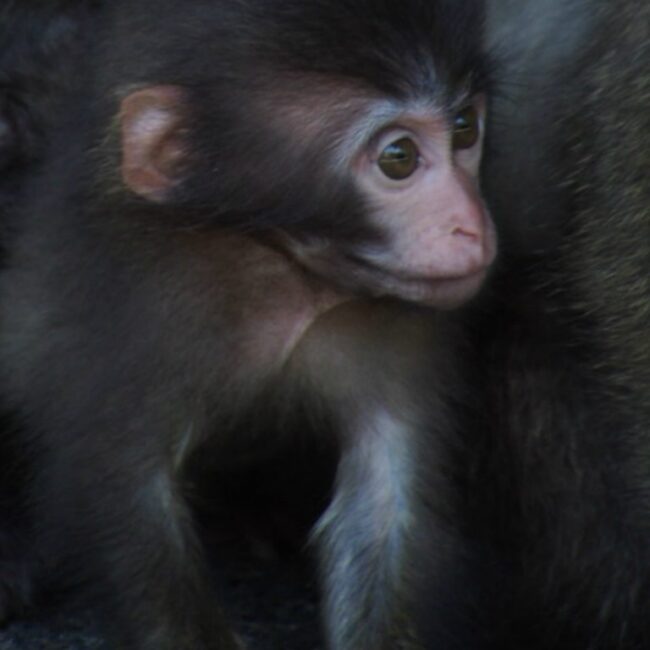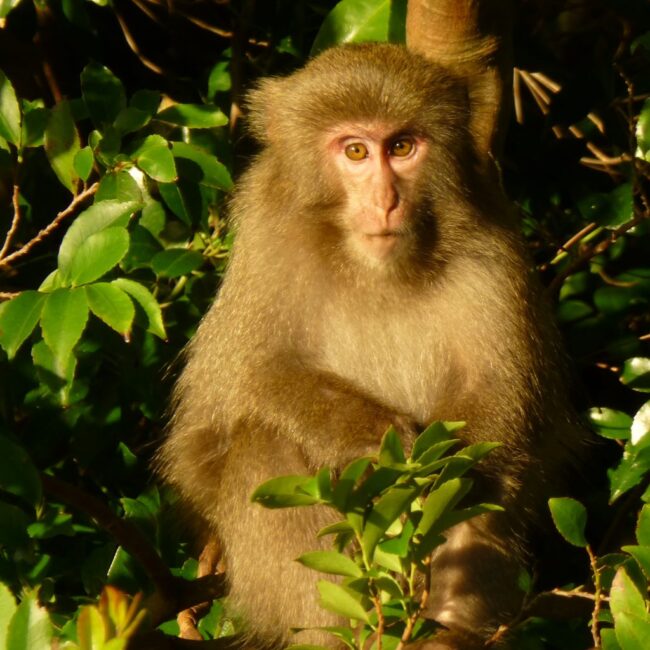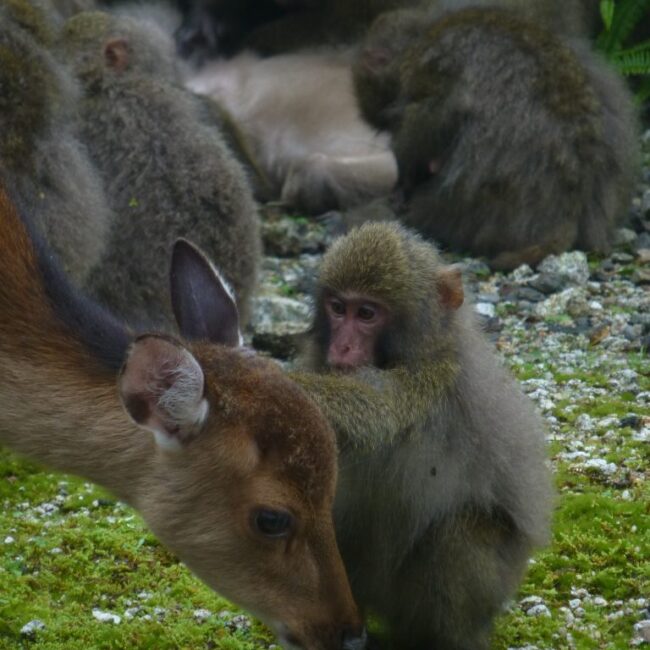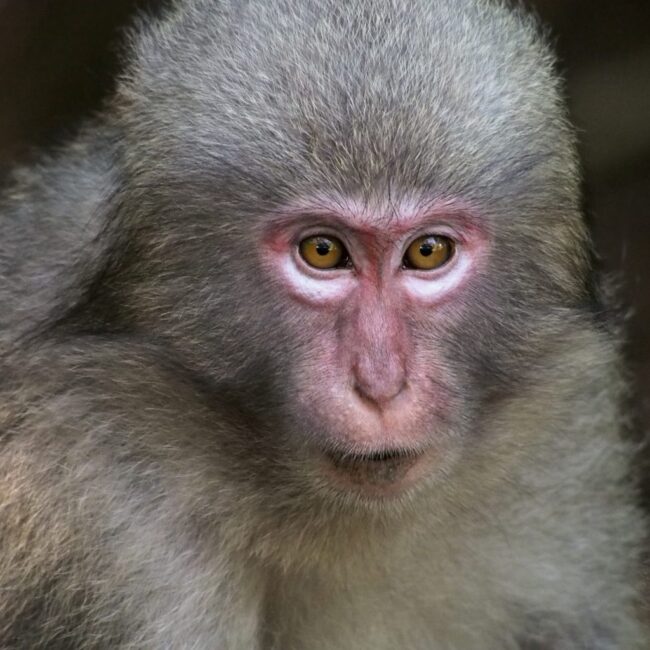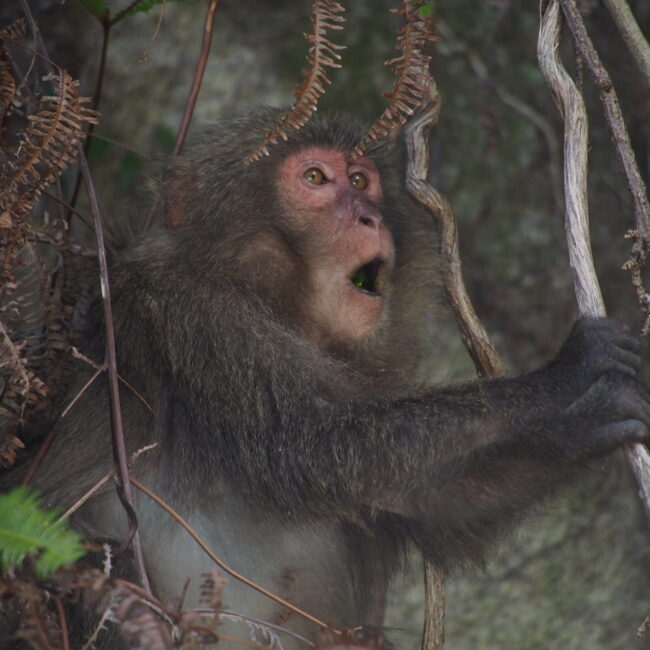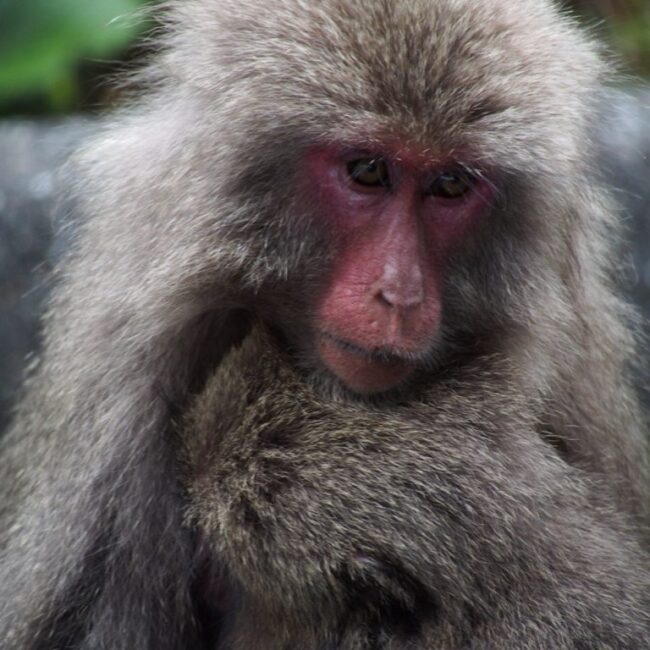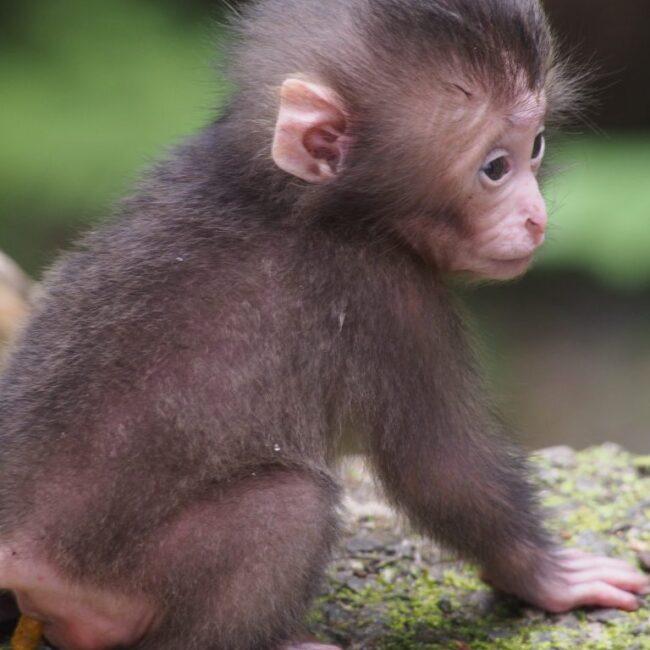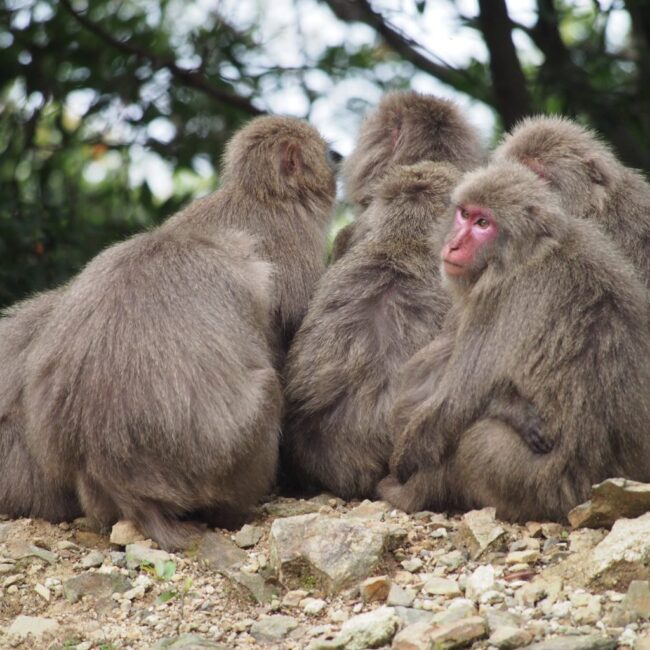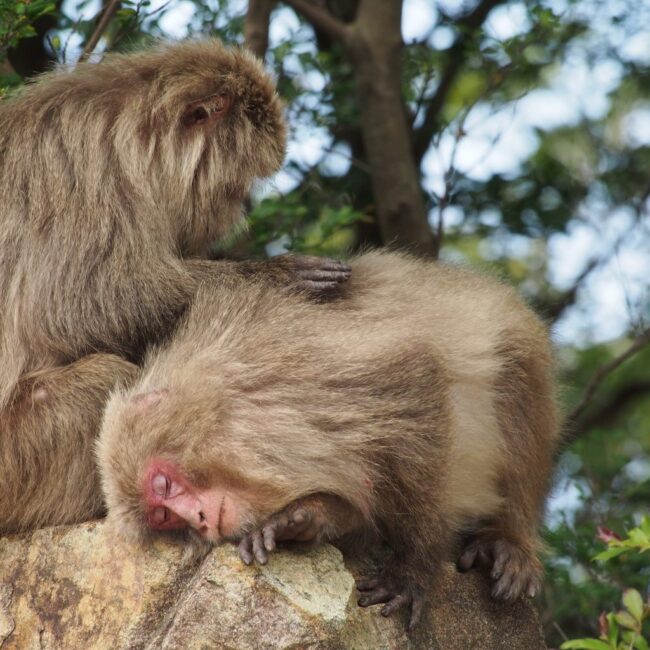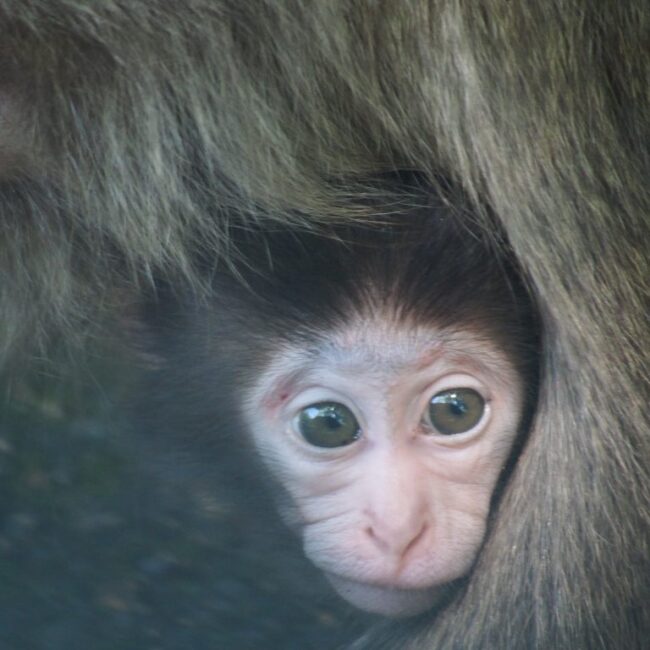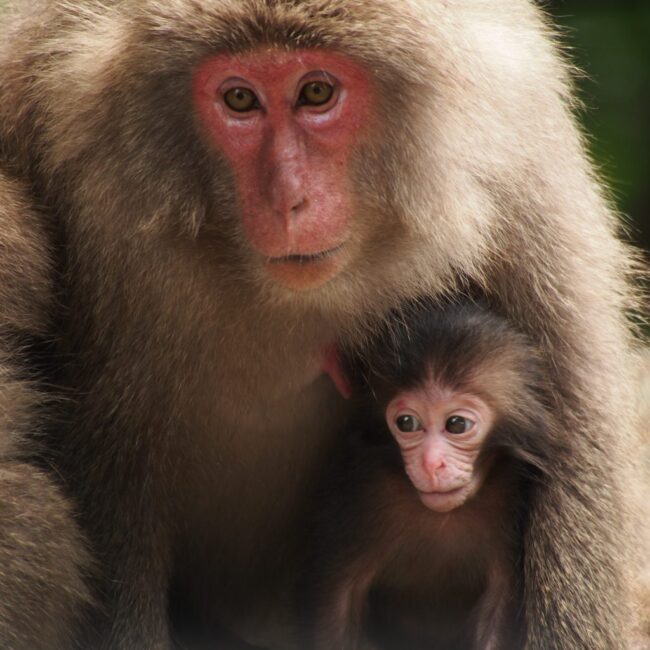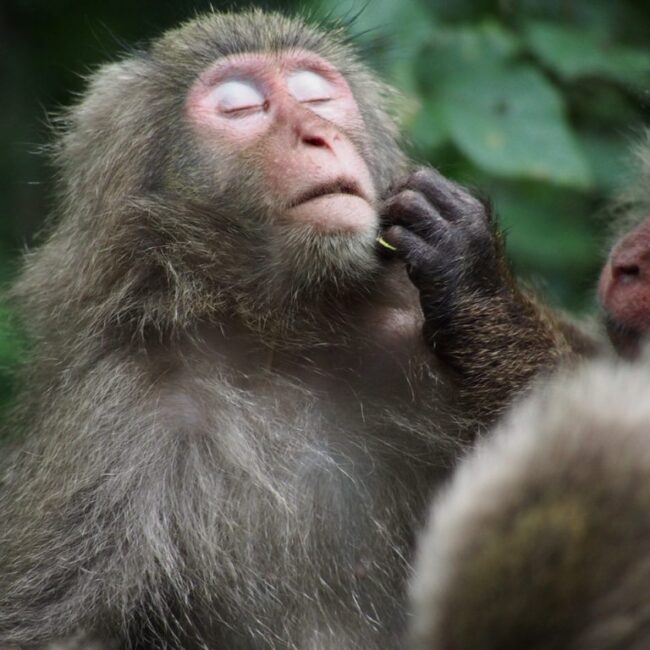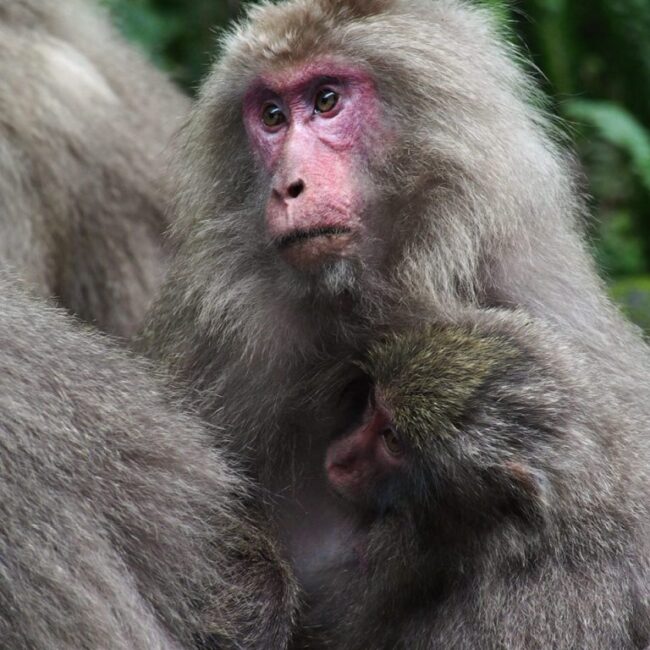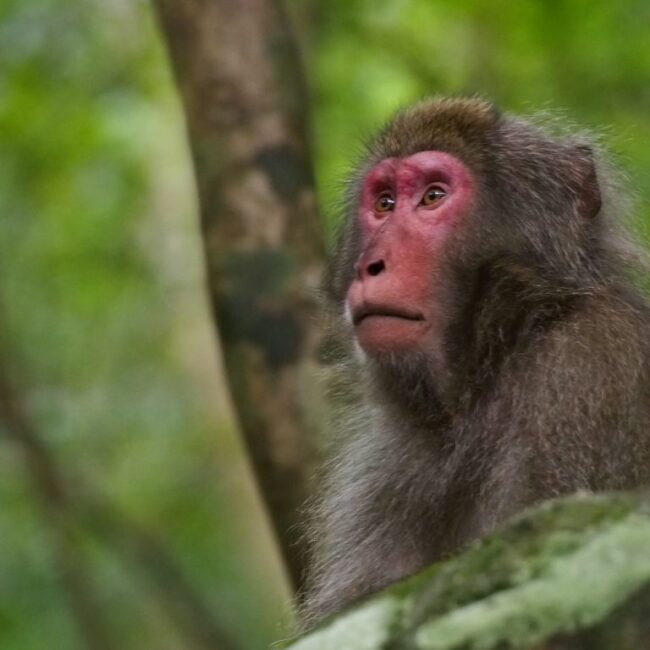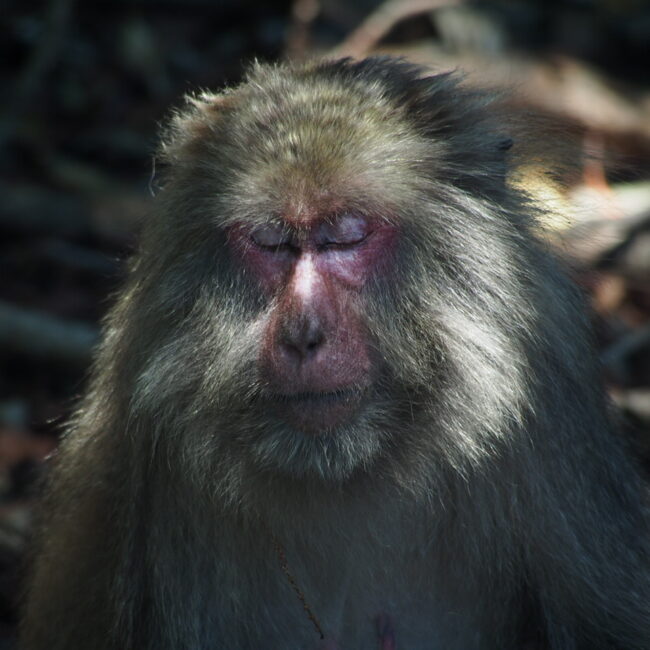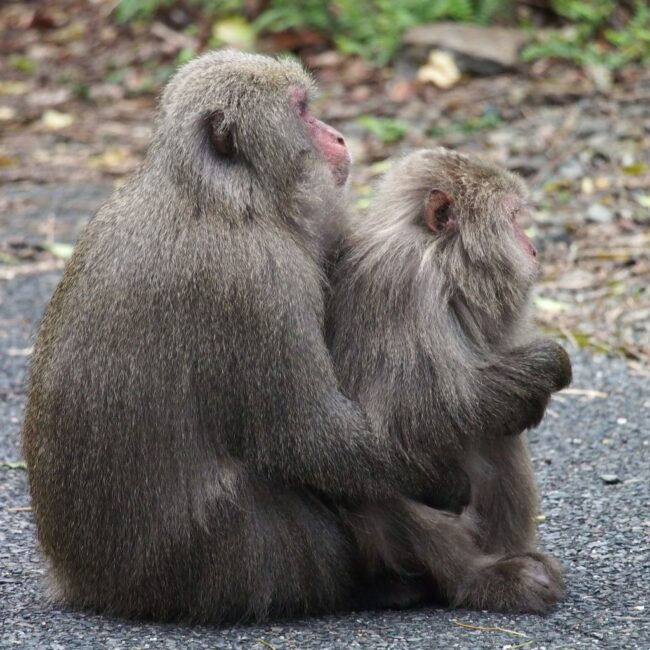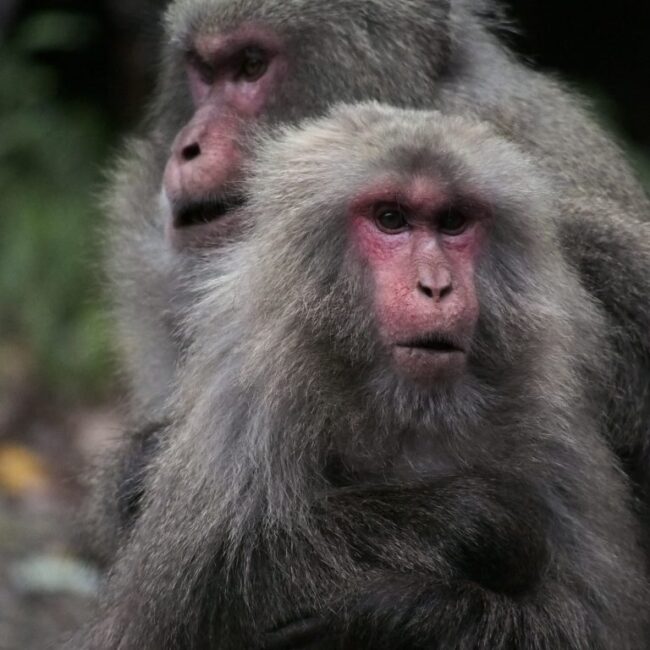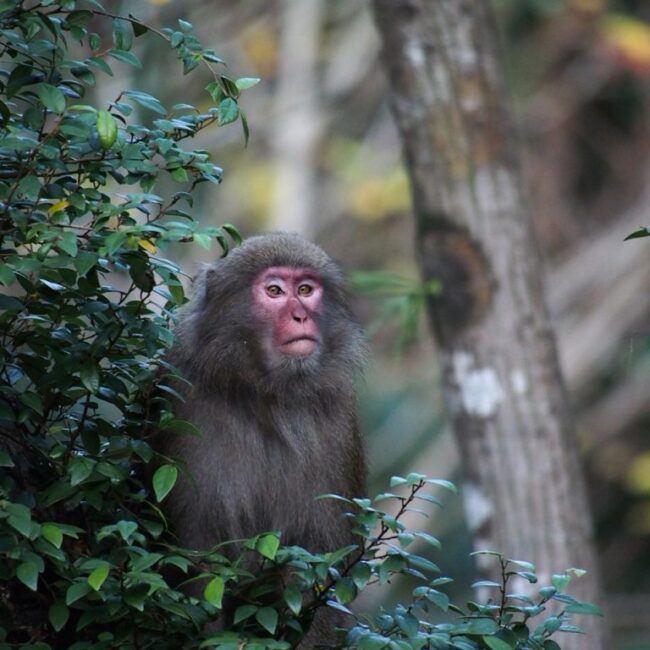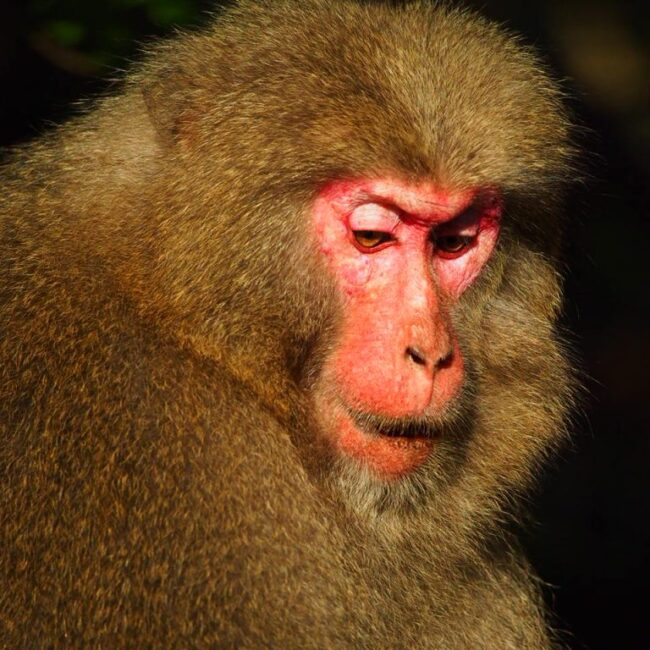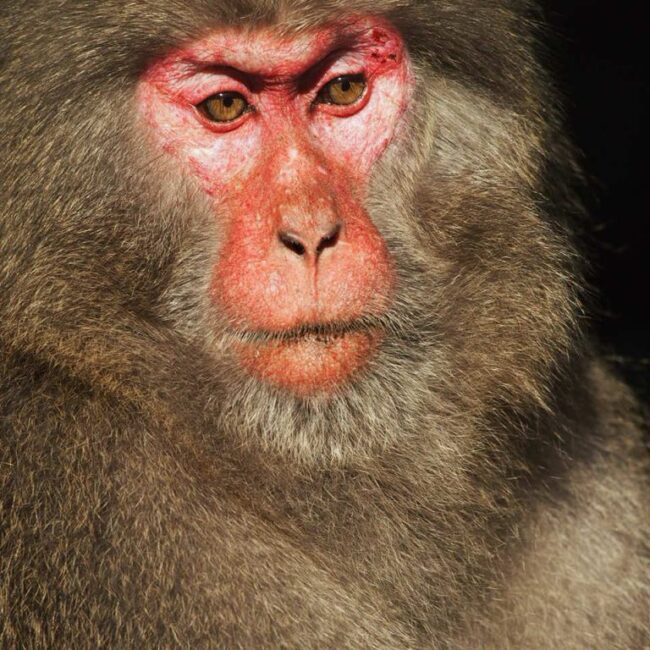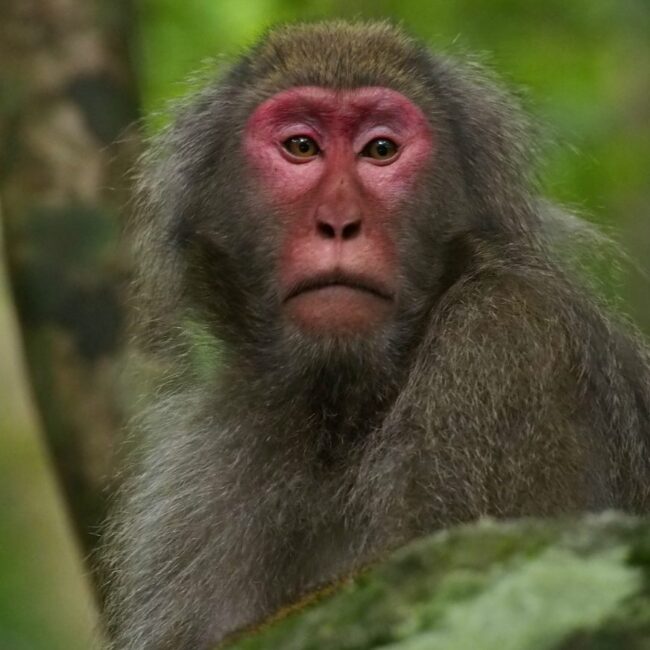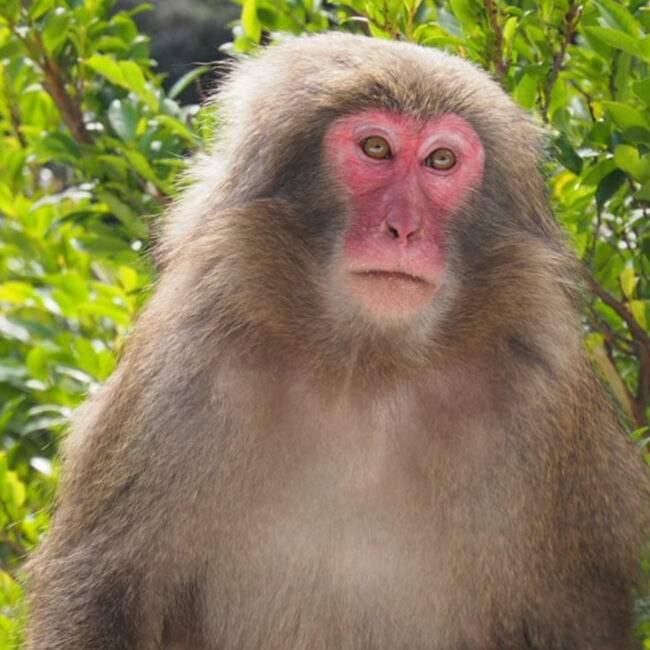THE NATURE
YAKUSHIMA MONKEY
The most relaxed monkey you are ever likely to meet!
About “Yakuzaru”
Yakushima monkey are a big attraction for visitors to Yakushima. The island is perhaps one of the best in the world to observe monkey in their natural environment without too much fear of being attacked (unless they are provoked to attack). For residents of Yakushima, we encounter the Yakushima monkey more often than we do dogs and our relationship with them is relatively good – although they can cause havoc to the agricultural areas of the island. The Yakushima monkey is a macaque and they have their origins from the Asian mainland.
The Yakushima macaque (macaca fuscata yakui) is closely related to the Japanese macaque (macaca fuscata) found on the mainland. The Yakushima macaque is smaller (weighing about 10kg) and has a thicker grey coat with darker hands and feet. There are estimated to be around 12,000 macaques on the island and they are commonly seen under altitudes of 800m. The macaques have a life expectancy of between 20 to 25 years, although the `average` age is much less than this. They live in matriarchal groups. Macaque babies are usually born in late spring, although you can see young macques at any time of the year on Yakushima. The young males stay in their group until they are around 2 – 3 year old and then alpha males will force them out of the group and they either wander alone, or remain with young males of a similar age. The macaques are omnivores, but mainly eat a plant-based diet. Research has shown that they eat over 150 different species of plants and also enjoy mushrooms and a variety of insects. During the acorn season it is common for the macaque to place their acorns on the road in the hope that a car tyre will crush the acorn open! The best area to see macaques is on the Seibu Rindo – Western Forest Road which runs between Kurio and Nagata. There is a strict policy on the island to never feed the macaques – please observe this.
Should you book a YES Island Tour then the YES guide would be able to give you a lot of information about the macaques and the deer on the tour.
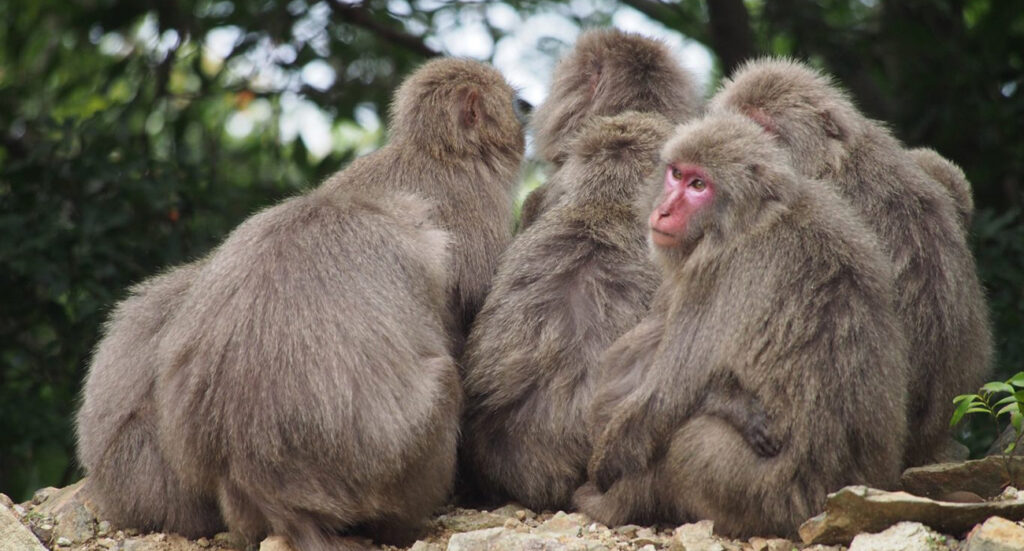
Macaque watching precautions
Never offer food.
It will change the animal`s natural feeding behaviour, leading to more crop damage for the locals and it will also cause ill health for the animal. If the macaque change their diet it will also effect the balance of the ecosystem.
Stop your car safely before watching the macaque.
The western forest road is very narrow and winding. Drive slowly and if you see a group of macaque you want to watch, first safely pull in to the side of the road and pay attention to other vehicles that may want to pass.
Keep a safe distance of at least 10m from the macaque.
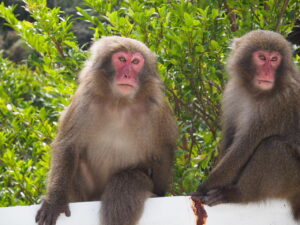 It is much less stressful for the macaque and safer for you if you observe them from the safety of your car. Remember you are entering their world and no matter how calm and peaceful they look they are wild animals and therefore unpredictable. Another major cause for concern is that the more familiar the monkeys become with human interaction then the less afraid they become. This then leads them to feel safe about entering the human residential areas and commence eating the agricultural produce. The outcome is inevitable as the animals are either trapped or shot. Therefore, do the animals and the residents a favor by staying within your vehicle when observing the macaque.
It is much less stressful for the macaque and safer for you if you observe them from the safety of your car. Remember you are entering their world and no matter how calm and peaceful they look they are wild animals and therefore unpredictable. Another major cause for concern is that the more familiar the monkeys become with human interaction then the less afraid they become. This then leads them to feel safe about entering the human residential areas and commence eating the agricultural produce. The outcome is inevitable as the animals are either trapped or shot. Therefore, do the animals and the residents a favor by staying within your vehicle when observing the macaque.
Don’t make eye contact with macaques.
Your curious look to a macaque signals something very different – staring is a sign of aggression. Eye contact will therefore make a macaque feel threatened and it may respond with aggression towards you. Watching from behind your camera is safer or gazing without staring.
If a macaque threatens you don’t panic and ....
Keep a neutral face, slowly walk backwards without turning your back. Look to the ground and avoid eye contact which signals to the macaque that you are not a threat and you are not taking part in this interaction. Be careful not to smile, a human smile looks like a submissive gesture to a macaque which can actually encourage it to be more aggressive. A neutral face signals that you are not a threat . Turning your back is an invitation for it to attack you. Macaques attack each other by jumping on each other’s backs. Once the macaques have calmed down and returned to their own business and you are at a safe distance, then you can turn around and walk away.
The BEST way to observe the Yakushima macaque is with a YES guide. Without the detailed explanations given during a tour then you may as well be at a zoo.
Book a YES Island Tour which is usually the tour that has more chances of observing the animals of Yakushima.



